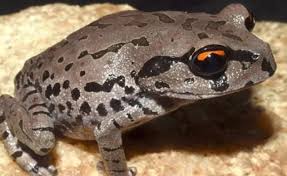Today’s Current Affairs: 17th April 2025 for UPSC IAS exams, State PSC exams, SSC CGL, State SSC, RRB, Railways, Banking Exam & IBPS, etc
Table of Contents
Hampi : In News

A mandapa at Virupaksha Temple collapsed due to heavy rain, sparking concerns over neglect.
- Hampi was the capital city of the Vijayanagara Empire, established in 1336 CE by Harihara I and Bukka Raya I of the Sangama Dynasty.
- Traditionally known as Pampakshetra of Kishkindha, Hampi is located in central Karnataka on the banks of the Tungabhadra River.
- Foreign travellers like Domingo Paes described Vijayanagara as “as large and beautiful as Rome”, highlighting its architectural grandeur and prosperity.
- The empire fell in 1565 CE after the Battle of Talikota, where the Deccan Sultanates defeated Rama Raya, leading to mass destruction.
- The city reportedly burned for six months.
- Hampi remained forgotten until the late 18th century when British antiquarian Colin Mackenzie mapped it in 1799, creating the first cartographic records.
- Early photographs and restoration attempts were made by British officials like Alexander Greenlaw, showcasing colonial-era interest in Indian heritage.
- The first major conservation initiative, the Hampi National Project, was launched in 1976.
- Excavations revealed key sites such as the Vitthala Temple bazaar, Pushkarini (stepped tank), and Paan-supari bazaar.
- Prominent landmarks include the Virupaksha Temple, Lotus Mahal, Queen’s Bath, and Elephant Stables.
- Hampi was declared a UNESCO World Heritage Site in 1986, recognising it as one of India’s largest archaeological zones, covering 250 sq. km and housing over 1,600 monuments.
Tuti Island:

Since the outbreak of civil war on April 15, 2023, between the Sudanese Army and the Rapid Support Forces (RSF), Tuti Island has been devastated by violence and occupation.
- Tuti Island, located at the confluence of the Blue and White Nile rivers in Khartoum, Sudan, is one of the city’s oldest settlements, known for its lush greenery and agriculture.
- The island spans 8 square kilometres and was traditionally dependent on farming and fishing, earning the nickname “Khartoum’s garden.”
- It holds deep cultural significance for the Mahas community, who settled there in the 15th century, making the island a symbol of indigenous identity and sustainability in the region.
- As per UN estimates, the war has displaced 13 million people, killed tens of thousands, and pushed 100,000 into famine conditions in Khartoum alone.
- Climate change has worsened Tuti Island’s vulnerability by disrupting the Nile’s natural flooding cycle, causing flooding, droughts, and desertification.
- Due to the dual threats of conflict and climate change, the HEART Project (Heritage Empowered Action for Risk in Tuti) was initiated to preserve the Taya system and document community knowledge.
What is a TPU (Tensor Processing Unit)?

A TPU is also a type of ASIC (Application-Specific Integrated Circuit), meaning it is built for a specific function — in this case, AI tasks.
- First introduced by Google in 2015, TPUs are specially designed hardware units built from the ground up to handle machine learning operations.
- TPUs focus on processing tensors — the multidimensional data arrays used in AI model computations.
- They are optimised to run neural networks efficiently, enabling faster training and execution of AI models than GPUs or CPUs.
- For example, training an AI model that may take weeks on a GPU can often be completed in hours using a TPU.
- TPUs are used at the core of Google’s major AI services, such as Search, YouTube, and DeepMind’s large language models, illustrating their real-world application in high-scale AI infrastructure.
Miniature Laser Grown on Silicon Chip:

Scientists from the US and Europe have successfully fabricated miniature lasers directly on silicon wafers, as published in a recent study in Nature.
- This is a major advancement in the field of silicon photonics, as integrating a light source (laser) directly on the chip has long been a technological challenge.
- Traditionally, lasers are manufactured separately and then attached to chips, which results in slower operation, higher costs, and manufacturing mismatches.
- The new research resolves this issue by growing the laser directly on a silicon chip using a scalable process and compatible with standard CMOS (Complementary Metal-Oxide-Semiconductor) technology, which is the backbone of current semiconductor manufacturing.
- Initially, electrons carried data within silicon chips. However, modern advancements are replacing electrons with photons, leading to the rise of silicon photonics.
- The laser functions on the principle of stimulated emission, where electrons drop to a lower energy level, releasing coherent photons to form a laser beam.
- However, silicon has an indirect bandgap, making it inefficient at light emission.
- Therefore, materials like gallium arsenide (GaAs) with a direct bandgap are preferred for laser construction.Photons carry information faster, with higher bandwidth and lower energy loss than electrons, making them ideal for next-generation computing, especially in data centres, sensors, and quantum computing.
Leptobrachium aryatium : New frog species

New frog species ‘Leptobrachium aryatium’ discovered in Assam.
- A new species of frog, named Leptobrachium aryatium, has been officially identified after a 21-year-long study.
- The frog was first studied in 2004 but was originally misidentified as Leptobrachium smithi.
- This species was found in the Garbhanga Reserve Forest, located on the southwestern edge of Guwahati, Assam, bordering Meghalaya.
- It lies adjacent to Deepor Beel, a Ramsar site, and forms a crucial part of the Garbhanga-Rani-Deepar Beel elephant corridor, highlighting its importance in regional wildlife movement.
- The frog has been named after Arya Vidyapeeth College, a prominent educational institution in Guwahati, in recognition of its role in transforming the local area from a liquor brewing hub to an educationally respected zone.
- Leptobrachium aryatium belongs to the Leptobrachium genus, which includes stocky frogs with broad heads, short hind limbs, and distinctively coloured eyes.
- This new species is notable for its fiery orange-and-black eyes, a reticulated throat pattern, and a rhythmic dusk-time call.
- Scientific confirmation of its status as a new species was done through morphological examination, DNA analysis, and bioacoustic studies (study of call patterns).
Etalin Hydroelectric Project:

The Arunachal Pradesh government recently allocated Rs 269.97 Crore for the construction of the Etalin Hydroelectric Project in Dibang Valley.
- Etalin Hydroelectric Project is a 3,097 MW hydropower project planned in the Dibang Valley of Arunachal Pradesh.
- It is one of the largest hydropower projects proposed in the country in terms of installed capacity.
- EHEP is proposed to be developed as a combination of two run-of-the-river schemes.
- The project proposes the construction of two concrete gravity dams, 101.5 metres and 80 metres high, on the Dri and Tangon rivers, which are tributaries of the Dibang
- The project area falls under the “richest bio-geographical province of the Himalayan zone” and “one of the mega biodiversity hotspots of the world”.
- The project area is dominated by indigenous populations belonging to Idu-Mishmi tribes.
- The project is being executed through the Etalin Hydro Electric Power Company Limited, a joint venture company of Jindal Power Limited and Hydro Power Development Corporation of Arunachal Pradesh Limited (a Govt. of Arunachal Pradesh Undertaking) with an ownership stake of 74% and 26%, respectively.
PM Vidyalaxmi Scheme:

Amid a slow uptake of the PM Vidyalaxmi scheme, public sector banks (PSBs) recently raised several concerns regarding its implementation.
- It is a Central Sector Scheme to provide financial support to meritorious students in their pursuit of higher education.
- The scheme targets students who have secured admission to any of India’s top 860 Quality Higher Education Institutions (QHEIs), both private and government, as ranked by the National Institutional Ranking Framework (NIRF).
- Students who receive any other Central/State Government Scholarship, interest subvention plan, or fee reimbursement are not eligible for benefits under the PM Vidyalakshmi scheme.
- Students who stop their studies in between or are dismissed from the institution on disciplinary or academic grounds are not eligible for interest subvention or credit guarantee under this scheme.
- A student whose annual family income is up to Rs 8 lakhs and who is pursuing any course from QHEIs will be eligible to get 3% interest subvention for education loans up to Rs 10 lakhs.
- If the education loan amount is more than Rs 10 lakhs, interest subvention will be provided for the disbursed total principal amount of loan up to Rs 10 lakhs.
Creutzfeldt-Jakob Disease:

Two people are believed to have died from a rare and incurable brain disease called Creutzfeldt-Jakob Disease (CJD) within just a few months of each other in the United States.
- It is a rare brain disorder that leads to dementia.
- It belongs to a group of human and animal diseases known as prion disorders, also known as transmissible spongiform encephalopathies (TSEs). .
- Symptoms of CJD can be similar to those of Alzheimer’s
- But CJD usually gets worse much faster and leads to death.
- All types of CJD are serious but are very rare.
- About 1 to 2 cases of CJD are diagnosed per million people around the world each year.
- The disease most often affects older adults.
- CJD and other prion diseases are caused by abnormal forms of proteins called prions.
- Healthy and harmless prion proteins are found throughout the body but mostly in the nervous system. Their overall role isn’t fully understood.
- When abnormal prions form, they can transmit their incorrect and damaging form to nearby healthy prion proteins and cause the healthy prions to change into abnormal prions.
- Once they’re formed, prions can clump together and build up in brain tissue, which may lead to the nerve cell loss and other brain damage seen in CJD and other prion diseases.
- The main symptoms of CJD are cognitive decline leading to dementia, involuntary muscle jerks (myoclonus), and lack of coordination of movements.
- Most people with CJD will die within a year of the symptoms starting, usually from infection.
- There’s currently no cure for CJD, so treatment aims to relieve symptoms and make the affected person feel as comfortable as possible.
- This can include using medicine such as antidepressants to help with anxiety and depression, and painkillers to relieve pain.
Thangjing Hills:

Tension prevailed near the buffer zone in Manipur’s Thangjing Hill range, which separates Kuki and Meitei inhabited areas in Churachandpur district, recently.
- Thangjing Hill (also called Thangching Hill and Thangting Hill), is a mountain peak in the Indian state of Manipur.
- It is in the Churachandpur district, to the west of Moirang.
- The north-south-running mountain range on which it sits is also called Thangjing range or Thangjing Hills.
- The range forms part of the western border of the Imphal Valley.
- It is believed by Manipuris to be the abode of Thangching, the ancestral deity of Moirang.
- It is considered a sacred site by the Meitei community, who traditionally visit it throughout the Manipur month of ‘Sajibu’ which generally falls in April.
- In the Meitei cosmology, the “body” of Manipur is represented with various natural features of the land, including the Thangjing hill as its right leg.
Clinidium lalitae:

Scientists from the Zoological Survey of India (ZSI) recently identified a new species of beetle named, Clinidium lalitae, from the northeast.
- It is a newly found species of beetle.
- It was discovered in the Talle Valley Wildlife Sanctuary in Arunachal Pradesh.
- It has been named ‘Clinidium lalitae’, in tribute to the late Dr. Lalita Ray Chaudhury, a respected coleopterologist and former scientist at Zoological Survey of India (ZSI) .
- The ‘Clinidium lalitae’ beetle is characterised by its unique morphology and belongs to a rare group of ground beetles that inhabit forest floors.
- These beetles play a significant ecological role in nutrient cycling and soil health.
61st Executive Committee meeting, the National Mission for Clean Ganga:

At its 61st Executive Committee meeting, the National Mission for Clean Ganga (NMCG) approved key projects aimed at cleaning the river, curbing pollution at the source, and promoting sustainable development while preserving the Ganga’s ecological and cultural value.
- Sewerage Projects in Moradabad (UP), Arrah (Bihar), Kanpur (UP), and Pujali (WB) to prevent untreated waste from entering rivers.
- Nature-Based Solution Pilot: CAMUS-SBT plant installation in Shahdara drain (Delhi) for Yamuna rejuvenation.
- Research & Innovation: Launch of IND-RIVERS Collaboratory (NMCG–IIT Delhi–Netherlands) for intelligent river systems and urban river solutions.
- Cultural Heritage: Approval for the study of traditional wooden boat-making craft in the Ganga basin.
- Ecological Education: Development of DDA Biodiversity Parks as Knowledge cum Skill Development Centres for river conservation.
Cap-and-Trade:

A recent study published in The Quarterly Journal of Economics confirmed that Surat’s Emissions Trading Scheme (ETS), the world’s first market for particulate emissions reduced pollution by 20–30% and lowered compliance costs by 11%.
- Cap-and-Trade is a market-driven environmental policy where the government sets a maximum limit (cap) on the total level of pollution that can be emitted by industries.
- Under this system, companies are issued pollution permits that allow them to emit a specific number of pollutants.
- If a firm emits less than its permitted share, it can sell its unused permits to other firms struggling to meet their limits.
- This creates a financial incentive for industries to reduce pollution efficiently and invest in cleaner technologies, as doing so can turn into a profit opportunity.
Karad Sanitary Waste Management Model:

Karad city in Maharashtra’s Satara district has achieved 100% safe segregation, collection, and disposal of sanitary and biomedical waste, setting a national benchmark.
- A comprehensive system ensuring complete safe disposal of sanitary waste through segregation, collection, and high-temperature incineration.
- Red bins placed at public toilets and garbage vehicles equipped with dedicated bins for sanitary waste.
- Waste is sent to a Common Biomedical Waste Treatment Facility (CBWTF), run by the Karad Hospital Association, incinerating at temperatures up to 1200°C.
- Real-time oversight by the State Pollution Control Board ensures environmental compliance.
- Women-led awareness campaigns and sanitary facilities in schools (vending machines, incinerators).
- Municipal council manages collection; hospital association handles incineration, provided free of cost to citizens.
- Promotes hygiene, women’s health, and environmental safety.
- Acts as a scalable model for small and medium cities aiming for efficient sanitary waste management.
Bombay Stock Exchange (BSE) : 150th anniversary
The Bombay Stock Exchange (BSE) is celebrating its 150th anniversary on April 17, 2025, in Mumbai, with Finance Minister of India attending the celebrations.BSE Ltd. is Asia’s oldest stock exchange and a major platform for trading equities, debt, mutual funds, derivatives, and commodities in India. Established in: 1875, originally as “The Native Share & Stock Brokers’ Association” founded by cotton merchant Premchand Roychand.
Colossal Squid:
For the first time in over a century, a juvenile colossal squid was filmed alive in its natural habitat at a depth of 600 meters in the Southern Ocean, marking a historic milestone in marine exploration.The colossal squid is the largest invertebrate species known, a massive deep-sea predator rarely observed in its natural habitat. Scientific Name: Mesonychoteuthis hamiltoni. It belongs to the class Cephalopoda, which includes octopuses, cuttlefish, and other squids. It resides in the deep, cold waters of the Southern Ocean, particularly around Antarctica.
Defence Literature Festival ‘Kalam & Kavach 2.0’:
The Centre for Joint Warfare Studies (CENJOWS), under the aegis of the Headquarters Integrated Defence Staff (HQ IDS) of the Ministry of Defence, in collaboration with Pentagon Press, hosted the second edition of the Defence Literature Festival ‘Kalam & Kavach 2.0’ in New Delhi on April 15, 2025. The event, held at the Manekshaw Centre, revolved around the theme, ‘Securing India’s Rise through Defence Reforms’, aligning with the Prime Minister’s vision for ‘Aatmanirbhar Bharat’ (Self-reliant India).
Banaras Shehnai Get Recognition of GI Tag:
The recent conferment of the Geographical Indication (GI) tag to the Banaras Shehnai is a landmark recognition of India’s rich intangible cultural heritage. Known worldwide through Ustad Bismillah Khan, the shehnai is not just an instrument but a symbol of spiritual and ceremonial music. For the traditional artisans of Varanasi (Kashi), the GI tag is not merely an official certificate—it is a deeply emotional and cultural validation of their legacy, commitment, and craftsmanship spanning generations.
SC Issued Guidelines to Child Trafficking:
The Supreme Court of India issued a stern warning to parents, emphasizing the need for extreme vigilance against the growing menace of child trafficking. The court highlighted the grave threats children face from trafficking gangs who exploit them for sexual exploitation, forced labour, child marriage, and illegal adoptions. The judgment reflects the apex court’s deep concern over the increasing use of technology by trafficking networks and the inadequacies of institutional responses.
UAE Assumes Chair of INTERPOL’s Committee on Governance:
The United Arab Emirates (UAE) has been elected as the Chair of the INTERPOL Committee on Governance, marking a pivotal moment in its rise as a global security leader. The election, held at INTERPOL’s headquarters in Lyon, France on April 11, 2025, saw Lt. Col. Dana Humaid Al Marzouqi secure 67% of the votes from INTERPOL’s member states. This achievement reflects growing trust in the UAE’s commitment to transparent, inclusive governance and international law enforcement cooperation.
Gujarat Police’s GP-DRASTI Drone Program: Enhancing Public Safety
The GP-DRASTI (Drone Response and Aerial Surveillance Tactical Interventions) program, introduced by the Gujarat police, marks a significant leap in modernizing law enforcement in the state. This initiative involves using quadcopters for enhanced crime monitoring, quicker response times, and better crime scene documentation. The program is designed to be a quick reaction force multiplier and evidence gatherer, particularly in the urban areas of Ahmedabad, Rajkot, Surat, and Vadodara, which have witnessed a surge in gang-related violence.Drones, which have been used for various policing tasks, are now being integrated at the police station level, allowing for real-time surveillance and faster deployment to crime scenes.
Military Leader Wins Presidential Election in Gabon:
General Brice Oligui Nguema won Gabon’s presidential election, securing over 90% of the vote, and reaffirming his control over the Central African nation. This victory follows a military coup in 2023, which saw Nguema overthrow the long-standing Bongo dynasty that had ruled Gabon for decades. Despite his promise to relinquish power after the coup, Nguema ran in the election under a new electoral code that allowed military officers to contest, eventually winning the presidency. Gabon, an oil-rich country with significant mineral resources, remains plagued by inequality and high corruption, which Nguema must now address during his seven-year term.
Tanzania Records Hottest Year Ever in 2024:
In 2024, Tanzania witnessed its hottest year since records began in 1970, driven largely by surging nighttime minimum temperatures. The national average temperature for the year reached 24.3°C, which is 0.7°C above normal, breaking the previous record set in 2023. The average minimum temperature hit 19.3°C, 1.1°C higher than the long-term average, indicating a stronger rise during nighttime than daytime. The year also became the fourth wettest in history, intensifying climate stress, especially for a country where 80% of the population depends on agriculture.




